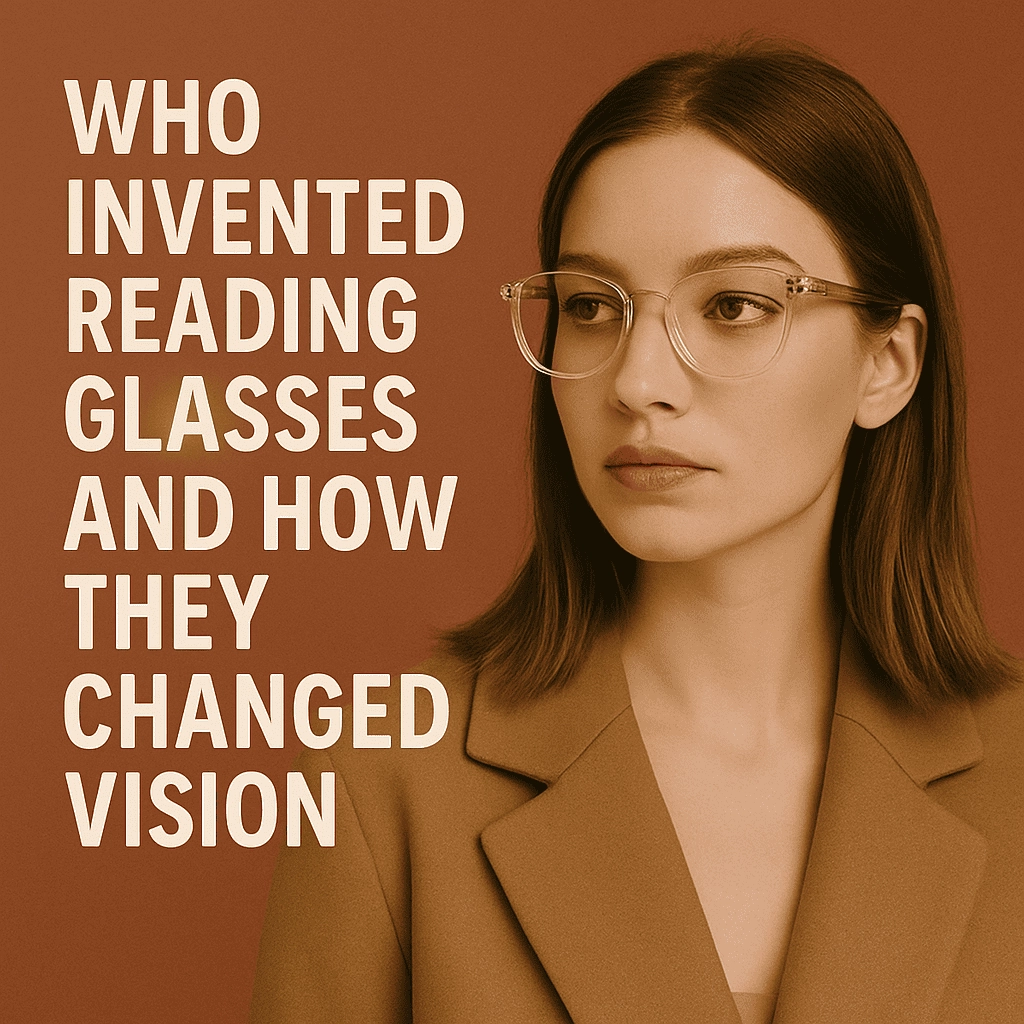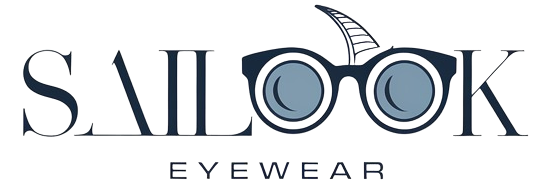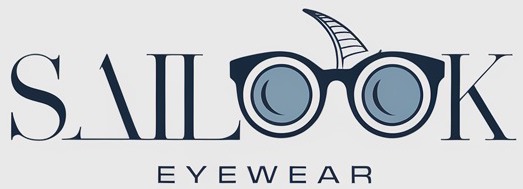Reading glasses have become an essential tool for millions of people around the world, providing much-needed relief to those struggling with near-sightedness, especially as they age. But have you ever wondered who invented reading glasses and how they transformed vision for generations? This article explores the fascinating history of reading glasses, their evolution, and the significant impact they’ve had on society. By diving into their origins, the innovators behind them, and their modern adaptations, we’ll uncover how these simple devices became essential to daily life.

1. Who Invented Reading Glasses?
Reading glasses were not invented by one person, but rather evolved over time with contributions from many individuals and societies. The first use of reading glasses can be traced back to the 13th century in Italy. It was around this time that the first spectacles, made of glass and mounted in a frame, were created. These early versions of reading glasses were designed for monks and scholars who needed help with reading ancient manuscripts and texts.
The true “invention” of reading glasses is attributed to Italian monk and scholar, Roger Bacon, who is believed to have invented the concept in the 1200s. However, it wasn’t until the 16th century that the modern form of reading glasses as we know them today began to take shape. The first pair of glasses was created in Venice, and these were made using crystal lenses set into frames.
Fast forward to the 18th century, when glasses became more widely accessible due to advancements in manufacturing and the growing demand for eye correction. Reading glasses became an indispensable tool for people of all ages, helping those with aging eyesight or other vision-related issues. The development of reading glasses went hand-in-hand with scientific discoveries about how lenses work to correct vision, and the technology has only continued to improve.
2. How Did Reading Glasses Evolve Over Time?
The evolution of reading glasses is a story of improving function and design. The early spectacles made in the 13th century were simple and rudimentary, featuring a single lens that helped magnify text. But as demand grew and technology advanced, reading glasses became more refined.
By the 17th century, the introduction of bifocals by Benjamin Franklin revolutionized the world of eyewear. Bifocals allowed wearers to have one lens for reading and another for distance vision, making it easier for people to see clearly at both close and far distances without needing to switch between multiple pairs of glasses.
In the 19th and 20th centuries, glasses became even more sophisticated, with various lens shapes, materials, and frames being introduced. The advent of plastic lenses in the 20th century made glasses more affordable and lightweight. As the field of optics advanced, so too did the materials used in lenses and frames. Today, you can find reading glasses made from durable metals, high-quality plastics, and even lightweight titanium, all of which contribute to comfort and durability.
The design of reading glasses also evolved to match changing fashion trends. What was once a simple tool for vision correction has become an accessory, with many brands offering stylish options to cater to different tastes and preferences.
3. What Are the Benefits of Wearing Reading Glasses?
Reading glasses provide numerous benefits, especially for those who are experiencing difficulty with near-vision. One of the primary benefits is the improvement in clarity when reading small print or working on tasks that require close-up vision, such as sewing or using a computer.
For individuals experiencing presbyopia, a condition that typically affects people over 40, reading glasses help alleviate eye strain and discomfort. Without the proper vision correction, presbyopia can make it difficult to read or perform tasks that require focused vision at close distances.
Reading glasses also reduce the risk of headaches caused by eye strain. When people struggle to read or focus on close objects, they tend to squint or strain their eyes, which can lead to tension headaches. Wearing reading glasses helps to reduce this strain, improving comfort and overall productivity.
Moreover, reading glasses provide convenience. With just a pair of glasses, individuals can enjoy improved vision without the hassle of constantly adjusting or squinting. Modern reading glasses are lightweight and portable, making them easy to carry in a bag or keep on hand whenever they’re needed.
4. How Do Reading Glasses Work?
The way reading glasses work is rooted in the science of optics. Reading glasses are designed to correct a vision condition known as presbyopia, which occurs when the eye’s lens loses flexibility and its ability to focus on close-up objects. When this happens, people often need reading glasses to magnify text or objects that are up close.
Reading glasses use convex lenses to magnify images. Convex lenses are thicker in the middle and thinner at the edges, which helps to bring the image closer to the eyes, making it easier to see clearly. The strength of the lenses is determined by the degree of magnification needed to correct the vision of the wearer.
For most people, reading glasses are needed when they experience difficulty reading small print, looking at a phone screen, or performing tasks that require up-close vision. The prescription strength of reading glasses depends on the severity of the presbyopia and is determined through an eye examination by an optometrist or ophthalmologist.
Modern reading glasses may include additional features, such as blue light blocking lenses to reduce eye strain caused by prolonged screen time, or anti-reflective coatings to improve clarity and reduce glare.
5. Who Was the First Person to Use Reading Glasses?
While it is difficult to pinpoint the exact person who first used reading glasses, historical records suggest that monks and scholars were among the first to benefit from these early optical devices. The use of magnifying lenses to aid reading dates back to ancient times, where magnification was achieved using rudimentary glass or crystal lenses.
The first person to use reading glasses, as we know them today, is often debated. However, Roger Bacon, a 13th-century scholar and philosopher, is credited with being one of the first to write about using lenses to aid in vision correction. His writings suggest that magnifying glasses were used as early as the 1200s to help people with reading and other close-up tasks.
The first known optical lenses, made from quartz and used for reading, appeared in Italy in the 13th century. However, it wasn’t until the 16th century that the use of spectacles became more widespread, particularly among scholars and the clergy. These early spectacles were simple, with no frames, and the lenses were mounted on a nosepiece to help people with reading.
Table 1: Historical Timeline of Reading Glasses
| Year | Event |
|---|---|
| 1200s | Roger Bacon writes about magnifying glasses |
| 1500s | First modern spectacles created in Venice |
| 1700s | Benjamin Franklin invents bifocals |
| 1800s | Glasses become more widely accessible |
10. What Materials Are Used in the Making of Reading Glasses?
Reading glasses are made from a variety of materials, each offering its own benefits in terms of comfort, durability, and style. The materials used in both the frames and lenses of reading glasses have evolved over time, making them more lightweight, affordable, and comfortable.
Table 2: Materials Used in Reading Glasses
| Material | Description | Common Use |
|---|---|---|
| Plastic | Lightweight, flexible, affordable | Frames, Budget Glasses |
| Metal | Durable, stylish | Frames, High-end Glasses |
| Titanium | Strong, lightweight, premium | Frames, Luxury Glasses |
| Acetate | Flexible, colorful, fashionable | Frames, Trendy Glasses |
| Polycarbonate | Shatter-resistant, lightweight | Lenses, Child Glasses |
11. How Do You Choose the Right Pair of Reading Glasses?
Choosing the right pair of reading glasses can make all the difference in comfort and clarity. Here are a few important factors to consider when selecting a pair:
- Magnification strength: Make sure to choose a pair of glasses with the right magnification for your needs. Optometrists can help you determine the correct strength during an eye exam.
- Frame style: Choose a frame that fits your personal style and needs. Full-frame glasses offer more coverage, while half-frame glasses allow you to still see over the top for distance vision.
- Lens features: Consider lenses with added features, such as blue light blocking or anti-glare coatings, if you spend time on digital devices.
Table 3: How to Choose the Right Reading Glasses
| Consideration | Tip |
|---|---|
| Magnification strength | Consult an optometrist for personalized recommendations |
| Frame style | Choose based on comfort and style preferences (full-frame, half-frame) |
| Lens features | Opt for anti-glare or blue light blocking lenses if you use screens frequently |
12. What Are Some Common Myths About Reading Glasses?
There are many myths surrounding reading glasses, and it’s important to separate fact from fiction. Some common myths include:
- Reading glasses make your eyesight worse: This is not true. Reading glasses are designed to correct near-vision problems and don’t cause further damage to your eyes.
- You only need reading glasses when you’re older: While presbyopia typically occurs in older adults, younger people can also benefit from reading glasses if they experience near-vision problems.
- Reading glasses are just for reading: In reality, reading glasses can be used for any close-up task, such as working on a computer, knitting, or sewing.
Understanding the truth behind these myths can help you make informed decisions about your eyewear needs.
13. How Have Reading Glasses Affected Fashion Trends?
Reading glasses have long transcended their role as a functional tool, evolving into a significant fashion accessory. While their primary purpose remains to correct near-vision, they have also become a key element in personal style, often chosen to complement an individual’s fashion sense or convey a specific personality.
Historically, eyewear was seen merely as a necessity for those with vision issues, but over the years, as designs became more diverse and frame materials improved, glasses began to reflect personal taste and fashion trends. What was once a practical solution to reading difficulties is now a statement of style.
Many well-known figures, particularly in the entertainment and fashion industries, have embraced eyewear as an essential part of their image. Celebrities like Johnny Depp, Iris Apfel, and Harry Potter’s iconic glasses are prime examples of how reading glasses became more than just vision correction tools—they became symbols of intellectualism, uniqueness, and style. These personalities have shown that glasses could reflect individuality and help define a signature look.
The 21st century saw an explosion of variety in frame styles, materials, and colors. Brands such as Warby Parker, Ray-Ban, and Gucci have capitalized on this trend, creating collections that blur the line between vision correction and fashion. Bold colors, oversized frames, and even vintage-inspired designs have become common, with eyewear now being marketed not just as a necessity, but as an accessory that enhances one’s overall look.
Furthermore, as the lines between fashion and function continue to blur, new innovations are also impacting eyewear design. For example, smart glasses that combine traditional lenses with technology are paving the way for the future of eyewear, introducing high-tech features such as augmented reality (AR), built-in speakers, and more. These advancements in design and functionality have further fueled eyewear’s role as both a fashion statement and a piece of wearable technology.
Table 4: Famous Figures and Their Iconic Reading Glasses
| Celebrity | Eyewear Style | Impact/Significance |
|---|---|---|
| Iris Apfel | Large, bold frames | Known for her eclectic and bold fashion choices, her glasses became a trademark of personal style. |
| Johnny Depp | Round, wire-framed glasses | Frequently seen in his signature round glasses, adding a mysterious and intellectual edge to his look. |
| Harry Potter | Round, black-framed glasses | Became a symbol of the nerdy-chic look, influencing generations of fans. |
14. What Are the Modern Innovations in Reading Glasses?
Reading glasses have come a long way since their inception, and today, they are not just tools for correcting vision, but also incorporate cutting-edge technology and materials that enhance both function and style. From smart glasses with integrated technology to lenses that help protect against blue light, the innovations in this field are making eyewear more versatile and efficient than ever.
One of the most notable advancements in recent years is the rise of blue light blocking lenses. As people spend more time in front of screens—whether for work, entertainment, or socializing—there has been a growing concern about the impact of blue light on eye health. Blue light is emitted by digital screens and has been shown to contribute to eye strain, headaches, and potential long-term damage. As a result, many modern reading glasses now come with lenses designed to filter out harmful blue light, offering a protective barrier against digital eye strain.
Lightweight and flexible materials are also revolutionizing the design of reading glasses. New technologies have allowed eyewear manufacturers to create frames made from memory metal and other flexible, durable materials that can bend without breaking. This is especially important for people who wear glasses frequently and need them to withstand daily wear and tear without compromising comfort or style.
In addition, smart glasses are increasingly gaining popularity. These glasses integrate technology directly into the frame, offering features like built-in speakers, voice assistants, and even augmented reality (AR). For example, smart glasses like those developed by companies such as Google and North have been designed to help users receive notifications, answer calls, and access information without needing to take out their phones. Although these innovations are still emerging, they are paving the way for future glasses that not only help with vision but also improve connectivity and interactivity.
Another exciting development is the use of adaptive lenses in reading glasses. These lenses automatically adjust their magnification power depending on the user’s needs. Whether you’re reading a book, working on your laptop, or simply looking at your phone, adaptive lenses provide the right level of magnification at all times, reducing the need for multiple pairs of glasses or constant adjustments.
Table 5: Modern Innovations in Reading Glasses
| Innovation | Description | Key Benefits |
|---|---|---|
| Blue Light Blocking | Lenses that filter out blue light from digital screens | Reduces eye strain, improves comfort during long screen use |
| Memory Metal Frames | Frames made from flexible, durable metals like titanium | Lightweight, flexible, and long-lasting |
| Smart Glasses | Glasses with integrated technology (AR, speakers) | Provides hands-free notifications and enhances connectivity |
| Adaptive Lenses | Lenses that adjust magnification automatically | Offers consistent vision correction without switching glasses |
These advancements in reading glasses demonstrate how the eyewear industry is moving beyond simple vision correction and into the realm of smart wearables and enhanced comfort. As technology continues to evolve, reading glasses are expected to become even more multifunctional, offering features that cater to both vision and lifestyle needs.
15. How Will Reading Glasses Continue to Evolve?
Looking ahead, the future of reading glasses is bright. With advancements in materials, manufacturing processes, and technology, reading glasses are poised to become even more comfortable, functional, and stylish.
In the future, we may see the introduction of even more high-tech features, such as adjustable magnification, self-tinting lenses, and greater customization options. As more people experience the effects of aging eyesight, the demand for innovative reading glasses will continue to grow, leading to even more breakthroughs in design and functionality.
Conclusion
Reading glasses have a rich history that spans centuries, providing vision correction for millions. They began as simple magnifying tools and have evolved into stylish accessories with multiple uses. Whether you’re experiencing presbyopia or just need some help with close-up tasks, reading glasses are a valuable asset.
By understanding their origins, benefits, and how to choose the right pair, you can ensure that your reading glasses work for your unique needs. Remember to select the right magnification strength, frame style, and lens features to get the best possible experience.
Ready to improve your vision? Don’t hesitate to consult with an optometrist or explore the various options available to you. Quality reading glasses are just one step away from clearer vision and a more comfortable lifestyle.
FAQ
Q1: What are reading glasses?
Reading glasses are eyewear designed to help individuals with presbyopia or other vision problems see clearly at close distances, such as when reading, working on a computer, or performing detailed tasks.
Q2: How do reading glasses work?
Reading glasses use magnifying lenses to enlarge close-up objects, making it easier for individuals to see clearly. The lenses correct near-vision issues by focusing light properly on the retina.
Q3: When should I start using reading glasses?
Reading glasses are typically needed around the age of 40, when people begin to experience presbyopia, a condition that makes it difficult to focus on close objects.
Q4: Are reading glasses available without a prescription?
Yes, over-the-counter reading glasses are available, but they may not provide the most accurate vision correction. It’s best to consult an optometrist for a prescription if you experience discomfort.
Q5: Can reading glasses improve my vision permanently?
No, reading glasses provide temporary relief for close-up vision but do not permanently improve eyesight. They help correct presbyopia and other vision problems at close distances.

